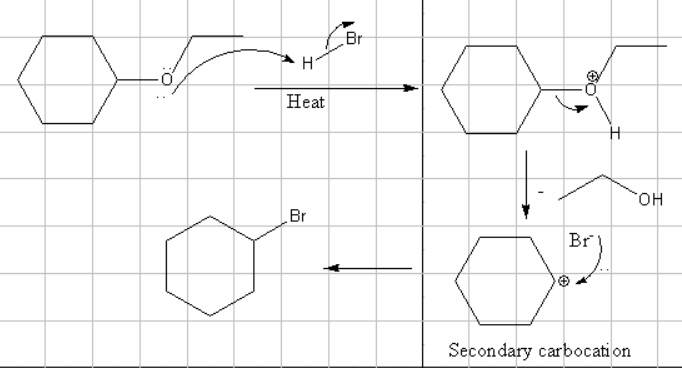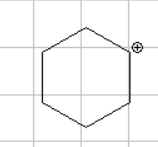Consider the mechanism of the reaction shown below. Give the structure of the next important organic reaction intermediate along the reaction coordinate. Your answer could be the final product. HBr heat
Consider the mechanism of the reaction shown below. Give the structure of the next important organic reaction intermediate along the reaction coordinate. Your answer could be the final product. HBr heat
Chemistry
10th Edition
ISBN:9781305957404
Author:Steven S. Zumdahl, Susan A. Zumdahl, Donald J. DeCoste
Publisher:Steven S. Zumdahl, Susan A. Zumdahl, Donald J. DeCoste
Chapter1: Chemical Foundations
Section: Chapter Questions
Problem 1RQ: Define and explain the differences between the following terms. a. law and theory b. theory and...
Related questions
Question

Transcribed Image Text:Consider the mechanism of the reaction shown below. Give the structure of the next important organic reaction intermediate along the reaction coordinate. Your answer could be the final product.
HBr
heat
Edit
Click on the drawing box above to activate the MarvinSketch drawing tool and then draw your answer to this question. If there is no reaction, then check the "no reaction" box below.
no reaction

Transcribed Image Text:Consider the mechanism of the reaction shown below. Give the structure of the next important organic reaction intermediate along the reaction coordinate. Your answer could be the fina
HBr
Edit
Click on the drawing box above to activate the MarvinSketch drawing tool and then draw your answer to this question. If there is no reaction, then check the "no reaction" box below.
no reaction
Expert Solution
Step 1: Reaction 1
The reaction is:

The intermediate formed in the reaction mechanism is a carbocation. Organic molecules when treated with an acid results in the formation of a carbocation. Here HBr is acid.
The mechanism is:

The cleavage takes place such that the formed carbocation is more stable. If the cleave takes place between the straight branch carbon and oxygen atom then a primary carbocation is formed which is less stable compared to secondary carbocation which is formed in the above mechanism.
The next important reaction intermediate is Secondary carbocation.
The intermediate is:

Trending now
This is a popular solution!
Step by step
Solved in 2 steps with 6 images

Knowledge Booster
Learn more about
Need a deep-dive on the concept behind this application? Look no further. Learn more about this topic, chemistry and related others by exploring similar questions and additional content below.Recommended textbooks for you

Chemistry
Chemistry
ISBN:
9781305957404
Author:
Steven S. Zumdahl, Susan A. Zumdahl, Donald J. DeCoste
Publisher:
Cengage Learning

Chemistry
Chemistry
ISBN:
9781259911156
Author:
Raymond Chang Dr., Jason Overby Professor
Publisher:
McGraw-Hill Education

Principles of Instrumental Analysis
Chemistry
ISBN:
9781305577213
Author:
Douglas A. Skoog, F. James Holler, Stanley R. Crouch
Publisher:
Cengage Learning

Chemistry
Chemistry
ISBN:
9781305957404
Author:
Steven S. Zumdahl, Susan A. Zumdahl, Donald J. DeCoste
Publisher:
Cengage Learning

Chemistry
Chemistry
ISBN:
9781259911156
Author:
Raymond Chang Dr., Jason Overby Professor
Publisher:
McGraw-Hill Education

Principles of Instrumental Analysis
Chemistry
ISBN:
9781305577213
Author:
Douglas A. Skoog, F. James Holler, Stanley R. Crouch
Publisher:
Cengage Learning

Organic Chemistry
Chemistry
ISBN:
9780078021558
Author:
Janice Gorzynski Smith Dr.
Publisher:
McGraw-Hill Education

Chemistry: Principles and Reactions
Chemistry
ISBN:
9781305079373
Author:
William L. Masterton, Cecile N. Hurley
Publisher:
Cengage Learning

Elementary Principles of Chemical Processes, Bind…
Chemistry
ISBN:
9781118431221
Author:
Richard M. Felder, Ronald W. Rousseau, Lisa G. Bullard
Publisher:
WILEY